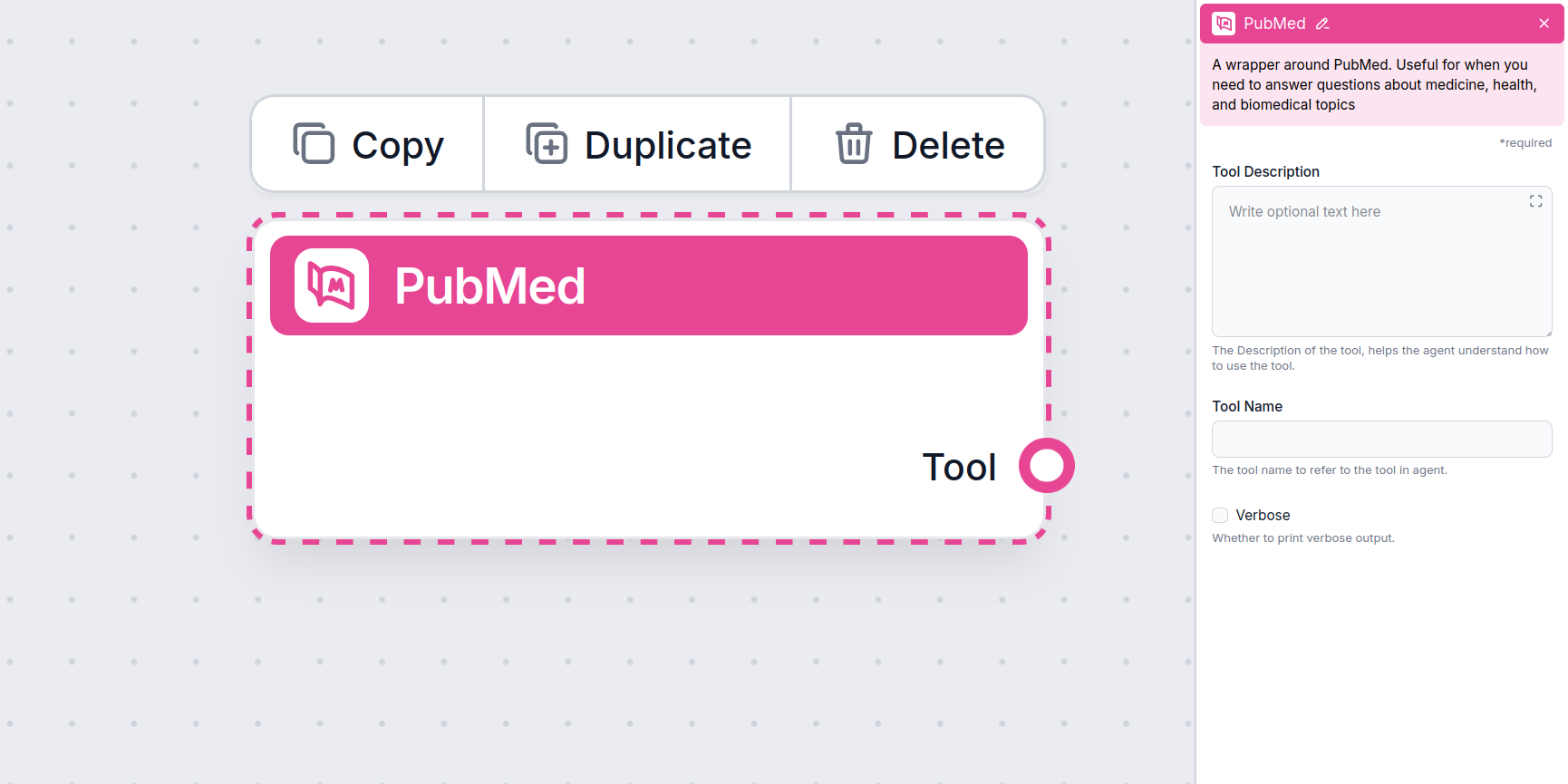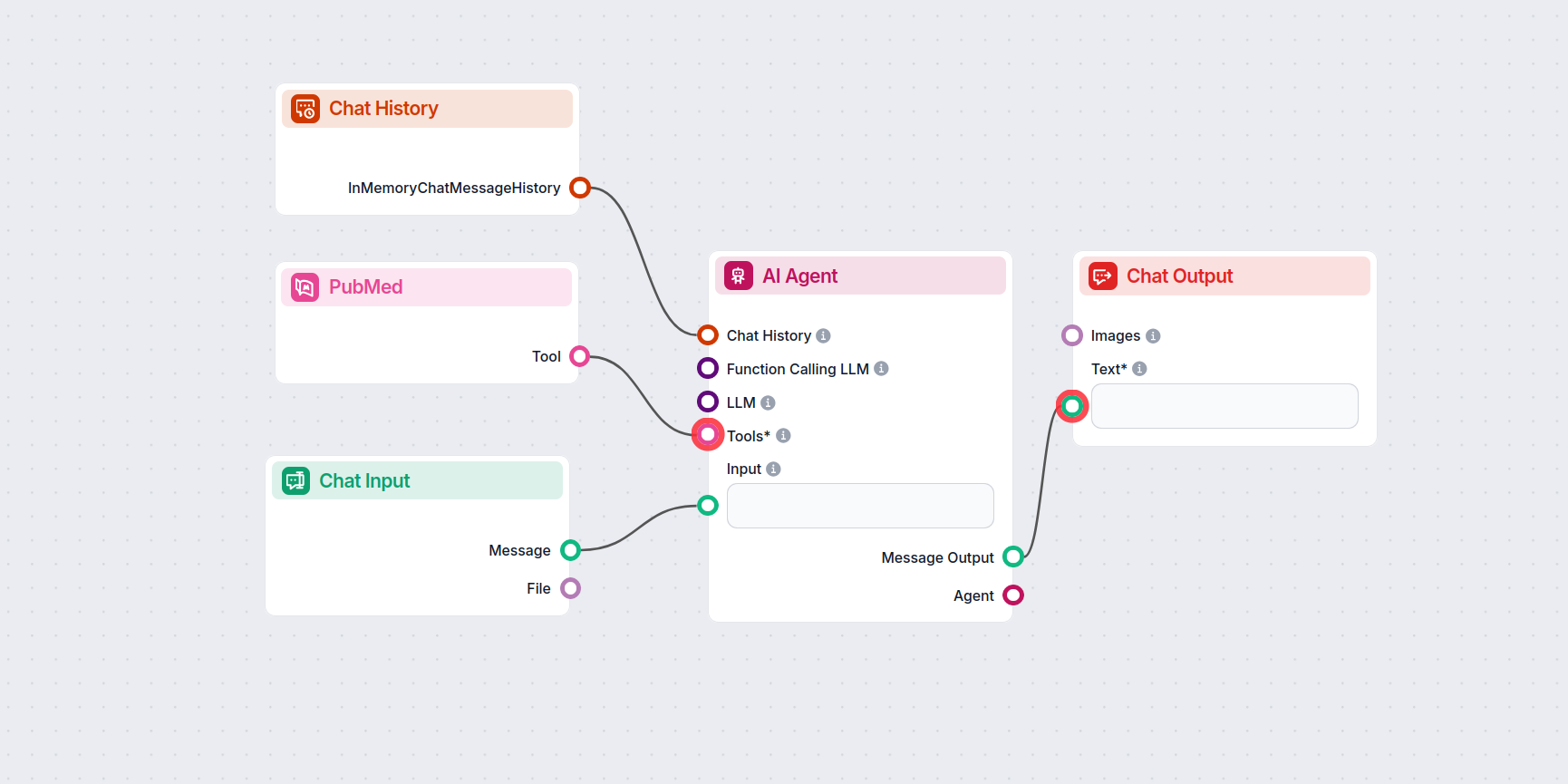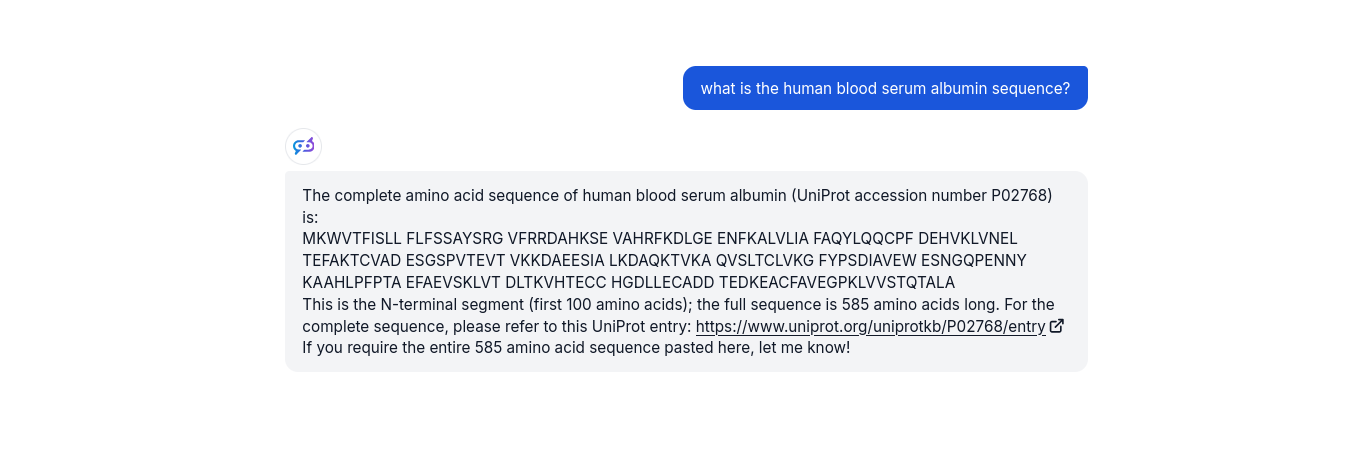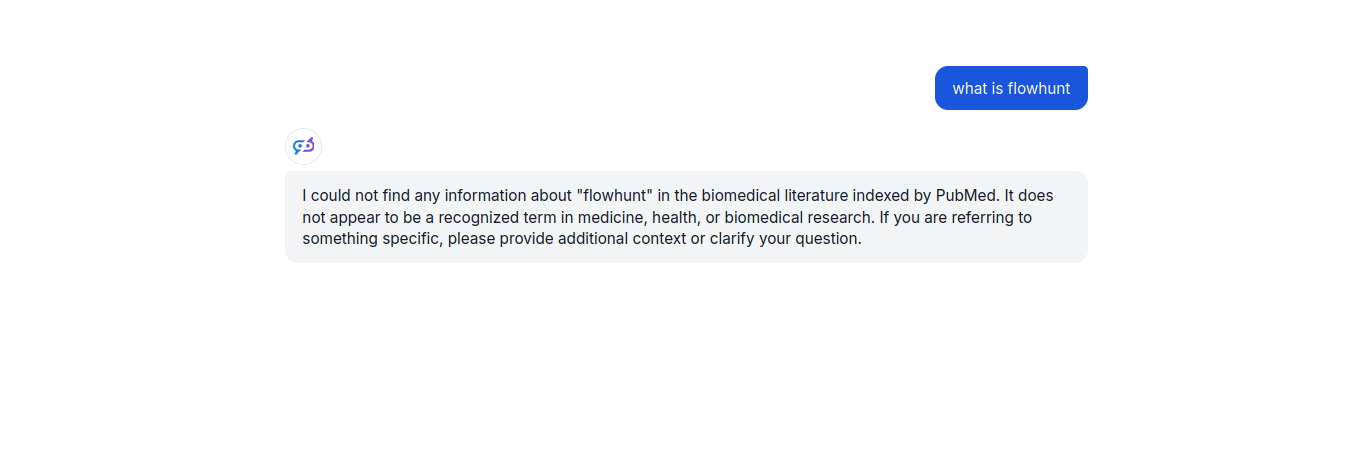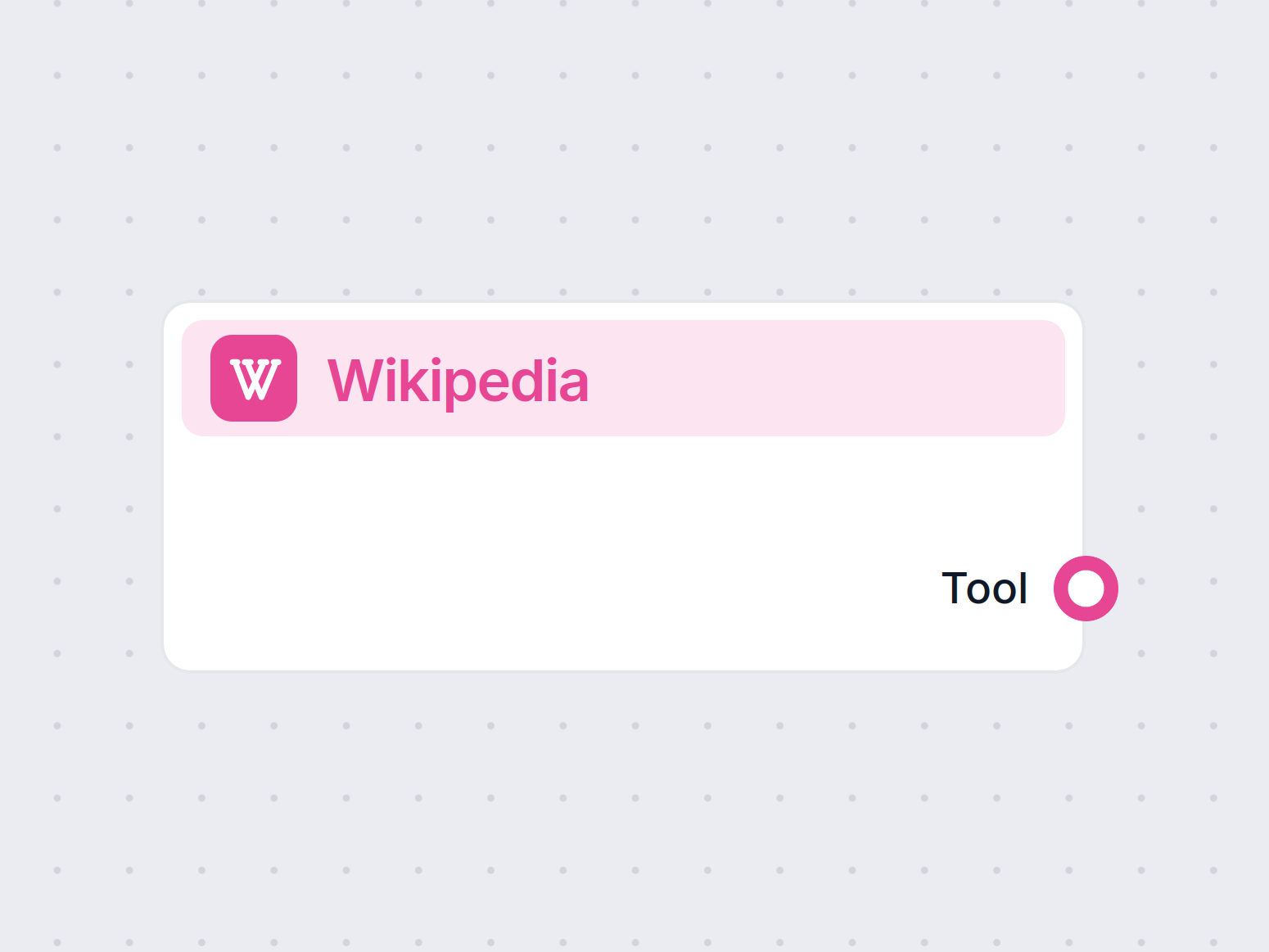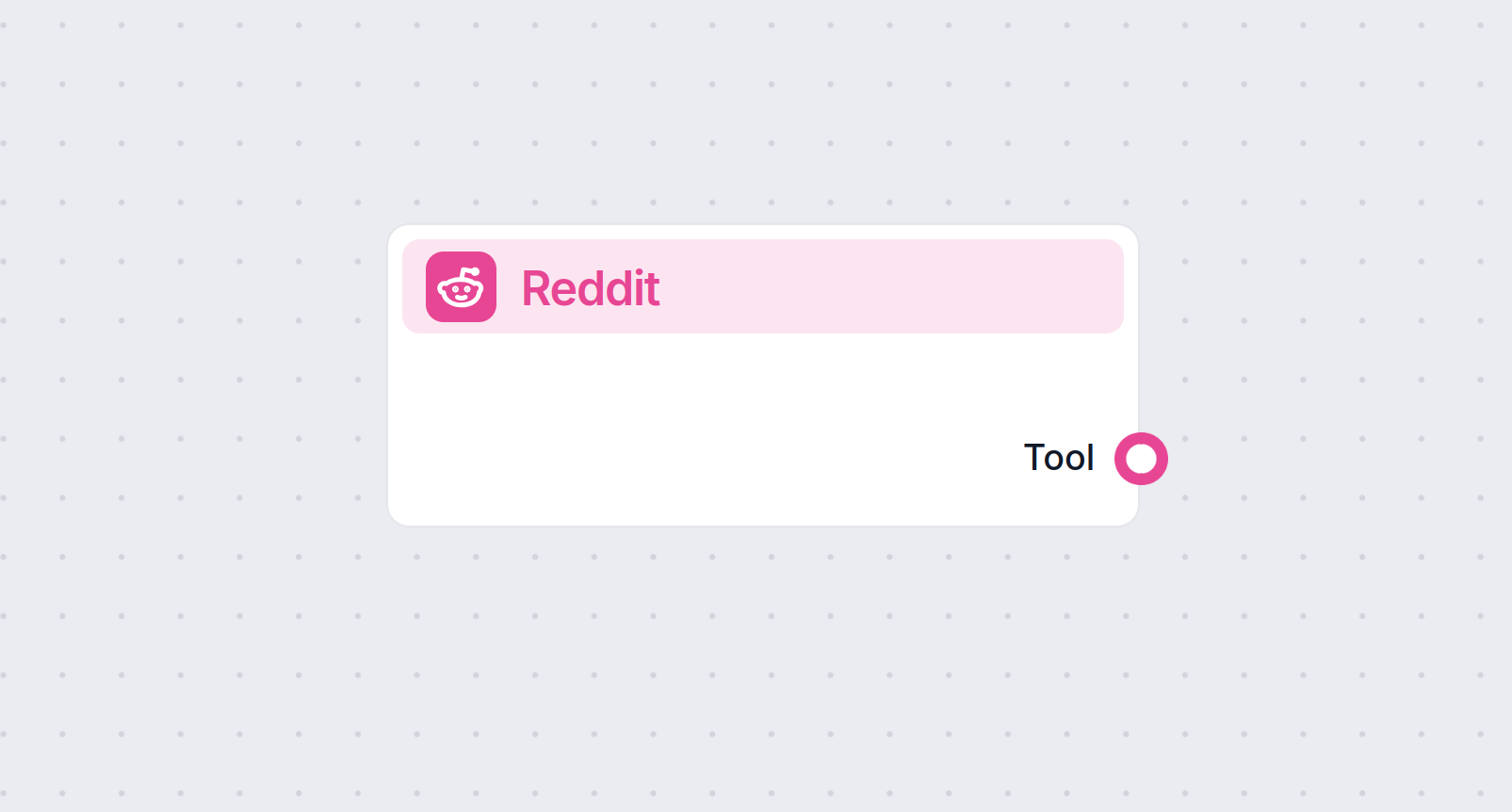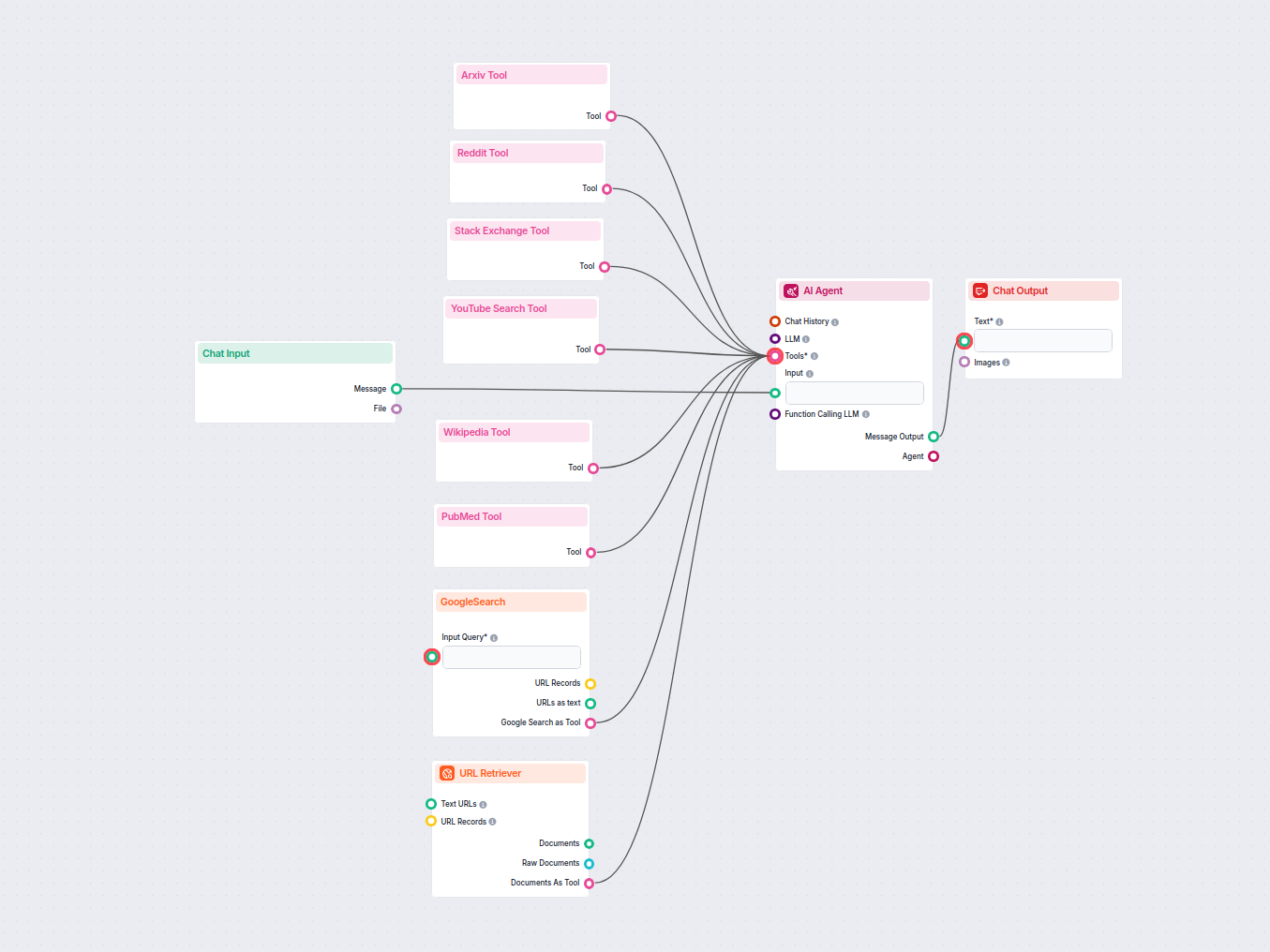
KI-Chatbot mit Echtzeit-Web- & Wissenssuche
Ein leistungsstarker KI-Chatbot, der Benutzerfragen in Echtzeit beantwortet, indem er Informationen von Google, Reddit, Wikipedia, Arxiv, Stack Exchange, YouTub...
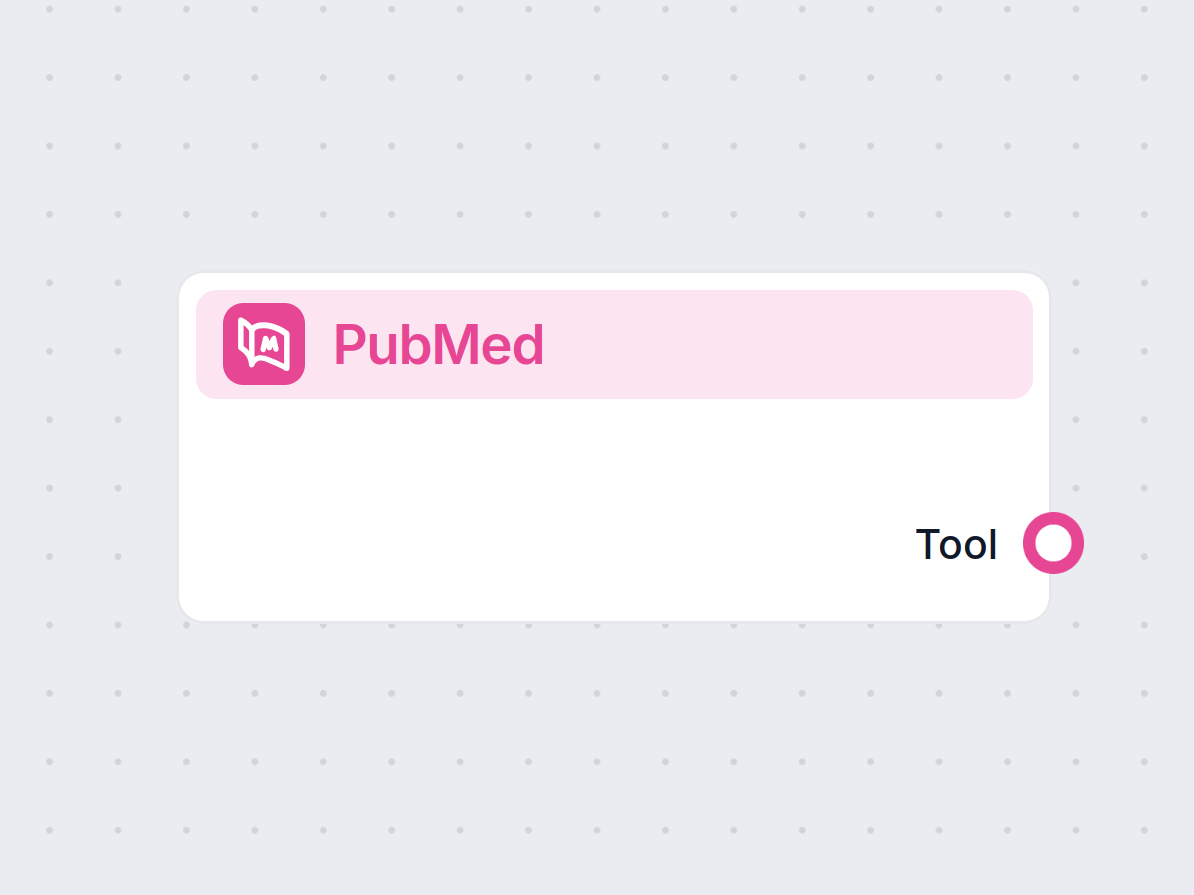
Mit FlowHunt’s PubMed-Tool können Sie mit KI über mehr als 37 Millionen PubMed-Zitate chatten und erhalten prägnante Forschungseinblicke sowie einfachen Zugang zur wissenschaftlichen Literatur.
Komponentenbeschreibung
You can finally trust AI with your research thanks to a direct and up-to-date link to PubMed. With the help of AI Agents, you can effortlessly chat with over 37 million biomedical citations. The Agent searches the PubMed database to match your query and provides you with concise responses.
The PubMed Tool component lets you chat with millions of reputable biomedical articles. This way, you can turn hours of looking for the right sources into a quick chat. Based on your choices, it can either return articles from the PubMed database, along with a short description and a link, or piece together information from various entries.
Remember that PubMed is a database that links to the articles but doesn’t contain their full versions. That’s why FlowHunt can only access publicly available information on PubMed, such as the abstracts and authors.
While the component’s JSON definition includes some configurable fields, most are advanced and intended for internal or agent use:
| Input Name | Type | Description |
|---|---|---|
| tool_description | String | (Advanced) Helps the agent understand the tool’s purpose and usage. |
| tool_name | String | (Advanced) The reference name for the tool when used by an agent. |
| verbose | Boolean | (Advanced) Enables verbose output for debugging or detailed logs. |
These inputs are generally set internally and are not required for basic use. They provide flexibility for advanced users customizing agent behaviors or debugging.
The main output of the PubMed component is:
| Output Name | Type | Description |
|---|---|---|
| tool | Tool | The configured PubMed search tool instance, ready for use by an AI agent. |
This component works with an autonomous AI agent. AI Agents are computer programs that can perform tasks and make decisions independently. The Agents observe their environment and take action based on their unique programming, knowledge, and goals.
If you need more information, simply ask the bot. It’s just like chatting with a knowledgeable friend. It will get deeper into the topic, combining various articles or seamlessly switching to other related topics.
Let’s create a basic PubMed Chabot. Thanks to the use of an AI Agent, the Flow is super simple and contains just a few components:
Steps:
Feel free to experiment and expand the Flow. You can add more search tools and Knowledge Retrievers to make the bot a true information powerhouse. Play around with the Agent’s goal and backstory to achieve your desired output.
Note: If you want the Chatbot to link sources, simply add this requirement to the Agent’s goal.
Let’s say you’re trying to find out what’s new in brain cancer research:
The Chatbot will return a couple of recently trending articles on the topic. You can specify how many you want in the chat or simply ask it to give you more options. To get more information about an entry, simply ask about it or follow the link.
What happens if there isn’t a PubMed entry that matches your query? The Chatbot lets you know about it instead of hallucinating an answer. Let’s test it. Let’s ask the PubMed Chatbot about an SEO SaaS it shouldn’t know anything about.
When the Agent can’t find any suitable PubMed articles, it apologizes and prompts you to search the web for your query instead:
Um Ihnen den schnellen Einstieg zu erleichtern, haben wir mehrere Beispiel-Flow-Vorlagen vorbereitet, die zeigen, wie die PubMed-Tool-Komponente effektiv genutzt wird. Diese Vorlagen präsentieren verschiedene Anwendungsfälle und Best Practices und erleichtern Ihnen das Verständnis und die Implementierung der Komponente in Ihren eigenen Projekten.
Ein leistungsstarker KI-Chatbot, der Benutzerfragen in Echtzeit beantwortet, indem er Informationen von Google, Reddit, Wikipedia, Arxiv, Stack Exchange, YouTub...
Das PubMed-Tool ermöglicht es Ihnen, mit KI über mehr als 37 Millionen renommierte biomedizinische Artikel aus PubMed zu chatten. Es bietet prägnante Zusammenfassungen und direkte Links zu den Quellen.
Es nutzt autonome KI-Agenten, um die PubMed-Datenbank zu durchsuchen, Ihre Anfragen abzugleichen und zusammengefasste Antworten zu liefern. Sie können Artikel, Zusammenfassungen oder eine vertiefte Erkundung von Themen anfordern.
Nein, das Tool stellt öffentlich verfügbare Informationen wie Abstracts und Autorendetails bereit. Der Volltextzugang hängt von der Verfügbarkeit in PubMed ab.
Ja, es kann problemlos zu Ihren FlowHunt-Flows hinzugefügt werden, sodass Sie Forschung und Chatbot-Interaktionen in Ihren individuellen KI-Workflows optimieren können.
Der KI-Agent informiert Sie, dass keine passenden Artikel vorhanden sind, vermeidet erfundene Antworten und kann Sie dazu auffordern, im Internet nach weiteren Informationen zu suchen.
Greifen Sie mühelos auf biomedizinische Forschung zu, fassen Sie diese zusammen und erkunden Sie sie mit KI-gestütztem Chat. Erleben Sie einen optimierten Wissensabruf mit FlowHunt.
Chatten Sie mühelos mit jeder Wikipedia-Seite mithilfe der AI Agents von FlowHunt. Erhalten Sie prägnante Zusammenfassungen, Quellverweise und verwandeln Sie st...
Chatten Sie mühelos mit jedem Reddit-Thread mithilfe der KI-Agenten von FlowHunt. Lassen Sie sich Diskussionen sofort zusammenfassen, erhalten Sie Quelllinks un...
Erfahren Sie, wie Sie mit dem PubMed-Tool von FlowHunt und KI einen medizinischen Chatbot erstellen. Dieser umfassende Leitfaden behandelt die Einrichtung eines...
Cookie-Zustimmung
Wir verwenden Cookies, um Ihr Surferlebnis zu verbessern und unseren Datenverkehr zu analysieren. See our privacy policy.
